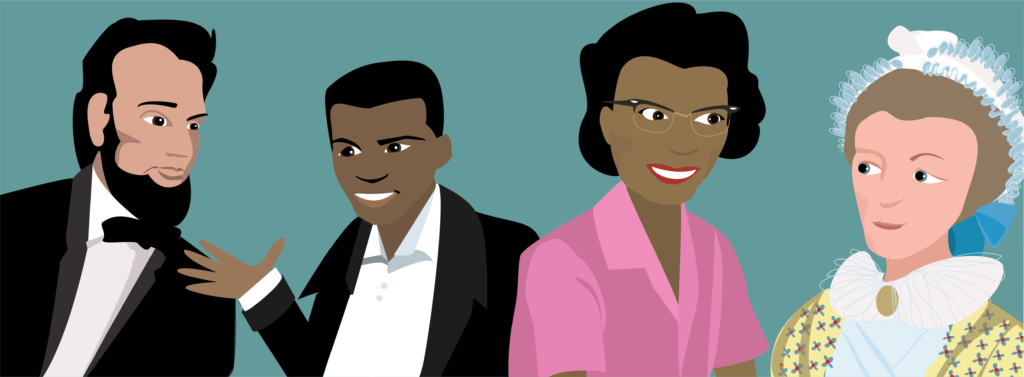Defining marriage in the Hoosier State
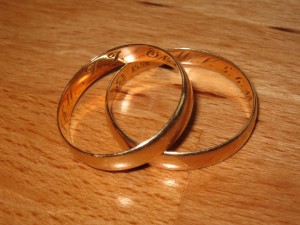 Within the next two weeks, the United States Supreme Court will render holdings in two cases involving secular marriage. The essence of both cases is to what degree a state government or Congress can define which persons can marry which other persons. While states are generally left to define what a marriage is, there have been times when those definitions come into conflict with constitutionally protected individual rights. In 1840, Indiana responded swiftly to a single nuptial as it joined other states at the time in proscribing certain types of marriages. Coming full circle, the Hoosier state is once again making headlines by urging the Supreme Court to proscribe yet another type of marriage. To understand this trend, it is instructive to reflect on that marriage performed some 173 years ago.
Within the next two weeks, the United States Supreme Court will render holdings in two cases involving secular marriage. The essence of both cases is to what degree a state government or Congress can define which persons can marry which other persons. While states are generally left to define what a marriage is, there have been times when those definitions come into conflict with constitutionally protected individual rights. In 1840, Indiana responded swiftly to a single nuptial as it joined other states at the time in proscribing certain types of marriages. Coming full circle, the Hoosier state is once again making headlines by urging the Supreme Court to proscribe yet another type of marriage. To understand this trend, it is instructive to reflect on that marriage performed some 173 years ago.
A case of wrong place, wrong time?
Indiana was grappling with a cascading series of crises at the end of 1830s. Still commonly referred to as a Western state, the depression triggered by the Panic of 1837 continued to worsen, particularly in the states north and west of the Ohio River. A nationwide credit crunch caused land values to lose money, slowly eroding the wealth of land speculators and consequently affecting commodities such as the once burgeoning pork industry.
Like many other states in the region, Indiana had borrowed heavily to finance internal improvements, particularly canals and roads, during the 1830s. The rapid growth of railroads that would soon stitch together the populated regions of the state and the advent of a national financial crisis effectively bankrupted a number of states by 1839, including Indiana. As in all periods of economic crisis and insecurity, passions against those seen as different and powerless provided temporary relief from the most pressing issues of the day.
A journey of many flights
Several accounts, with only minor conflicting points, corroborate the events leading to the marriage between John N. Wilson and Sophia Y. Spears.
The economic crisis of the time sent many a family to flight back to their former homes. During the growing periods of settlements in the prairie states of Illinois and Missouri, seemingly cheap farmland offered struggling farmers from the East opportunities for fresh starts. One such family were the Spears from Massachusetts. Most likely using the Western Pike, (National Road),they had relocated to Missouri, purchased land and prospered to the point of hiring a farmhand.

According to the Indiana abolitionist Levi Coffin, as recounted in his autobiography, John Wilson had been a slave who “belonged” to a neighbor of the Spears. Wilson was manumitted at a specified age and continued working for his former “owner.” The father and husband of the Spears family, (first name unknown to me), hired from his neighbor Wilson who continued to work for the Spears after manumission. When fortunes turned against the family, Wilson elected to remain with the Spears, perhaps due to the worsening health of Mr. Spears.
By Coffin’s account, the relationship between the family and their hired man was one of trust and respect.
The farm was sold and other property disposed of, and they were about to start eastward when the husband and father sickened and died. A short tie before he breathed his last, he called his servant to his bedside and requested hi to take charge of his wife and two daughters and see them safely back to the home in the East.
– Reminiscences of Levi Coffin, pp. 155-156
Wilson was faithful to his promise and guided the family’s wagon team as far east as Indianapolis when, in the late fall of 1839, circumstances halted their journey to Massachusetts. Wilson provided the bulk of income for the family through the use of his horse team and Sophia’s sister secured employment at the recently formed Second Presbyterian Church in downtown Indianapolis where she played the organ. To the Spears and Wilson, their temporary residence in Indianapolis must have seemed a respite from the sorrow of loss and the looming threat of destitution.
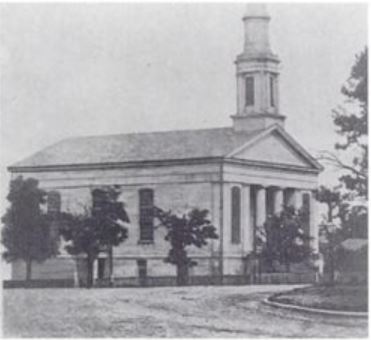
What God hath joined together…
In order from most to least populous, Indiana’s four largest cities in 1840 were New Albany, Madison, Indianapolis and Richmond. The state capital since 1825 held slightly more than half the population of New Albany. Of the 2692 persons recorded in the federal census as living in Indianapolis in 1840, only 122 were African-American with another 93 persons of color living in Marion County, of which Indianapolis was and is the county seat. It was in this still relatively small city that John Wilson felt comfortable enough to proclaim his affections for Sophia.
By all accounts, both Sophia and her mother approved of desired relationship and it was with the mother’s blessings that the couple were wed on or about New Years’ Day of 1840. Accounts differ on the exact details of the community response upon learning of the marriage.
Yet there was a case of miscegenation here on January 1, 1840. A young lady had been brought here from the East to play the organ in the new Episcopal church, and her sister came with her. A few months later the sister married a light-colored mulatto, who had served in the family for some years. This caused much excitement, and a mob, led by Josiah Simcox, and composed mostly of young men and boys, surrounded their house and captured the groom. The bride was not badly used, but the groom was given a ride on a rail and warned to leave town, which he promptly did. Sulgrove says that the leader of the mob also left town and never ventured to return openly, though he did secretly. On February 12, 1840, in its account of the legislative proceedings, the Journal said: “Yesterday morning, Mr. Johnson presented the petition of Sophia Spears, the white female who recently, in this town, connected herself in marriage with a light mulatto man, praying a divoree. The petition was accompanied by another of the same import from a large number of the citizens of Indianapolis. Immediately after the reading of the petitions, Mr. Johnson introduced a bill dissolving the bonds of matrimony between Sophia Spears and John N. Wilson, which was read three times and passed.” It is notable, however, that it was not passed without opposition. The vote in the House was 61 for and 22 against the bill. There was also opposition in the Senate, but it passed on February 22, by a vote of 20 to 14. – Greater Indianapolis: The History, the Industries, the Institutions, and the People of a City of Homes. , Jacob Piatt Dunn, page 240.
Coffin’s account differs on two points. For one, he refers to John Wilson as Charlie. There is no definitive explanation for this as newspapers of the time and state legislative records name both parties to the marriage. The most plausible explanation is that a man aged 77 years simply made a mistake recalling the man’s name after 36 years.
Coffin also describes the bride, not the groom, as the person paraded on a rail. Again, the evidence suggests Coffin’s account is faulty in this regard.
Not that there’s anything wrong with that!
By today’s standards, Levi Coffin was not so enlightened as Jerry Seinfeld. The cast of Seinfeld’s obligatory remark whenever the subject of being gay was broached can be contrasted to the prevalent sensibilities of even radical abolitionists of the early 1840s.
In his autobiography, Coffin states unequivocally, “…We were not in favor of amalgamation and did not encourage the intermarriage or mixing of races, but we were in favor of justice and right-dealing with all colors…” This statement is nearly identical to that of an 1842 editorial in The Free Labor Advocate, an abolitionist newspaper published in Coffin’s home of residence, Newport, (Now Fountain City) Indiana.
Though not color-blind, the Coffins, to absolutely include his wife Catherine, befriended the estranged, soon to be divorced, John Wilson.
As outrage and indignation filled the pages of most Indiana newspapers, news of the miscegenation soon reached Newport, Indiana and the Coffins. By this time the forlorn Wilson who had fled for his life to a free black settlement in Henry County, Indiana, was contacted by Coffin who invited Wilson to live with his family until the matter of his wife could be resolved.
Levi sent an emissary, fellow Quaker and abolitionist George Shugart, to Indianapolis for the purpose of retrieving Wilson’s clothing and goods as well as ascertain whether or not Sophia still felt love for her husband. Shugart reported to a relieved Wilson and to Coffin that, indeed, the bonds of love still endured.
The faithful courage of Catherine Coffin
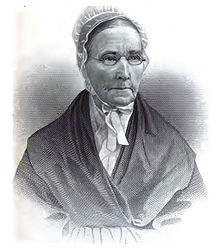
It must be noted that during Wilson’s tenure at the Coffin home, it was Catherine who tended to the household and who operated the “station” of the Underground Railroad while her husband was away at work or traveling. This was an act of extraordinary moral bravery for any woman of that time living in that location.
Less than five years before, Catherine was condemned by her own Friends (Quaker) meeting for “…having relations with a married man…” There exists no specific evidence of the details behind the charge of adultery, but a compelling body of evidence suggests that her relationship with fellow Quaker Jacob Hockett had everything to do with abolition as opposed to some romantic tie. Following Nat Turner’s slave revolt, most Quakers disavowed the illegal work of the Underground Railroad as well as the radical abolitionist demands of immediate, uncompensated emancipation.
Levi soon found himself the target of a community-wide boycott of his dry-goods store, but had countered the economic attack through political maneuvering. Appointed a board of director member for the local state bank branch, Coffin used his indispensable power of loan approval to stop the boycott cold and protect his UGRR activities. Unable to effectively menace the husband, it is altogether likely that the wife bore the brunt of a community’s ire.
Coffin, who never writes about the alleged incident with Hockett, writes lovingly of his wife throughout their 52-year marriage. In this following passage, a trace of pride towards his wife can be inferred.
Many people blamed me for taking in Charlie, (John Wilson), the young colored man, and harboring one whom they regarded as a great criminal. I gave him employment, and he remained with e for several months. He proved to be quiet, orderly and industrious, and very gentlemanly in all his way, yet many of the women in our town and neighborhood were as much afraid of him as if her were a murderer. My wife and a few other women had no such foolish fear of poor Charley, but sympathized with him in his troubles…
A happy ending alleged
Coffin goes on to relate that after several months, John and Sophia were reunited in their new residence in Cincinnati. From there, so the account goes, the couple departed the city, allegedly to return to Massachusetts or some other location where they might live together unmolested.
Further research awaits to confirm this final portion of the story. Wilson was said to have easily passed for a white person and it was only the rumor that he possessed one drop or more of negro blood, (he did), that prevented a peaceful marriage. It was not uncommon for light-skinned persons of color to move westward and live without discrimination after passing as white. I’d like to think this was the case with the Wilson couple.
Indiana continues to define marriage
Indiana went on to enact several more anti-miscegenation laws after passage of the 1840 law entitled, “An Act to Prohibit the Amalgamation of Whites and Blacks.” The ’40 law was repealed, but only in favor of a slightly less odious law outlawing interracial marriage enacted in 1842.
When the state adopted a new constitution in 1851, it included the notorious Article XIII which prohibited persons of color from entering the state, provided fines for those residents hiring or even encouraging such immigration. The article empowered the legislature to “pass laws to carry out the provisions of this article” and so the legislators did.
Following the Civil War in which hundreds of African-Americans from Indiana fought to preserve the union, the state continued to enact and enforce anti-miscegenation laws. In 1871, the Indiana Supreme Court upheld such a law in the case of the State of Indiana v. Gibson, maintaining that “Neither the Fourteenth Amendment to the Constitution of the United States nor the U. S. Civil Rights Act passed by Congress has impaired or abrogated the laws of this State on the subject of the marriage of whites and negroes.”
Similar laws remained in force in Indiana up until 1965. Two years later, in 1967, the U.S. Supreme Court held as unconstitutional all state laws banning interracial marriage.
History as prologue
Indiana’s Attorney General Greg Zoeller drafted the amicus brief in support of the Defense of Marriage Act, the federal law being challenged in the case of U.S. v. Windsor. Zoeller also co-authored another amicus brief in support of California’s Proposition 8, banning gay marriage, the issue under consideration by the high court in Hollingsworth v. Perry. Looking back to 1840, one could say that Indiana is nothing but persistent in it’s views on marriage.
Neither case about to be decided by the Roberts Court concerns which churches or faiths can recognize which types of marriages. Non-secular institutions may freely reject miscegenation, gay marriage or deny holy matrimony involving divorces parties.
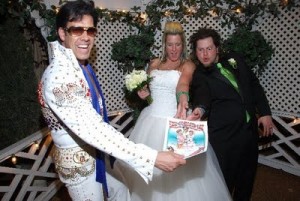
Indiana has historically defended the traditional institution of marriage and the state shows no appetite for change now. Regardless of the Supreme Court’s rulings this month, one fact remains clear. When heterosexual strangers meet while in Vegas and then exchange vows before God and Elvis, their traditional marriage will be welcomed in the Hoosier state.
